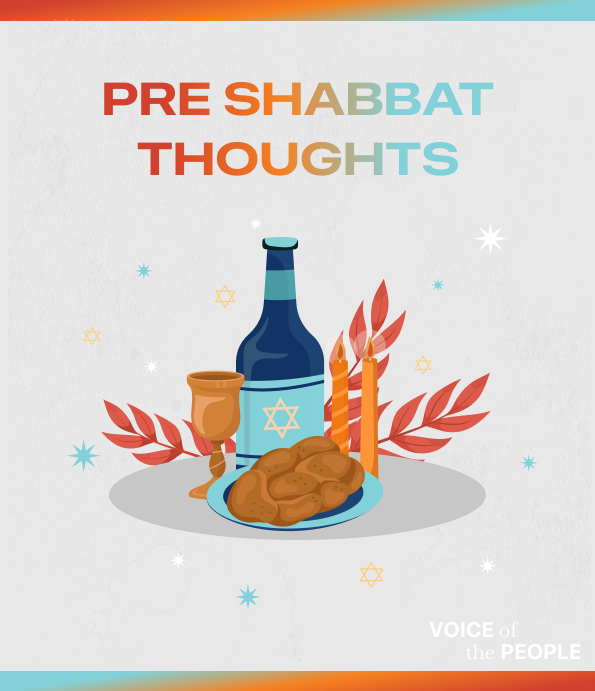“This week’s Torah portion, Emor, which translates to “speak”, contains a tapestry of laws and themes, focusing on the sanctity required of the Kohanim, the holiness of sacred times, and the ethical and ritual expectations of the Israelites. Let’s focus more on the latter two.
Parashat Emor offers a striking juxtaposition of sanctity and severity. On one hand, we are gifted with the holiness of Shabbat; a complete rest, a sacred convocation. On the other, we encounter one of the Torah’s most difficult narratives in my view: the story of the blasphemer, the son of an Israelite woman and an Egyptian man, who is brought before Moses after cursing G-d and is ultimately stoned by the community. These two elements, Shabbat and the stoning of the blasphemer, seem at first to exist in tension: one is about peace and rest, the other about judgment and violence. Yet, a deeper reading reveals that both point toward a shared spiritual principle: the sanctity and power of speech.
Shabbat is introduced in Emor, not merely as a day off from labor, but as a “mikra kodesh”, a holy calling. The word mikra shares a root with kara (to call, to proclaim), highlighting that Shabbat is sanctified not just by ceasing activity, but by how we speak and relate to each other on this day. It is a time when speech is elevated: blessings over candles, words of Torah, songs of peace, and heartfelt conversations. In contrast, the story of the blasphemer shows speech at its most destructive…words that tear, divide, and desecrate.
We are offered some insight into the blasphemer’s background. He is the child of Shelomith, daughter of Dibri of the tribe of Dan, and an Egyptian man. It is interesting to note that we do not learn the son’s name. As a person of mixed heritage, the son is denied a place among the tribes when trying to pitch his tent, leading to conflict. His outburst, and the severity of its consequences, reflects not only an individual transgression but a society’s struggle with inclusion, identity, and belonging. Some commentators, such as Rashi, suggest that the real story here is the community’s failure to provide him a place, which ultimately culminates in his breakdown.
Juxtaposing this narrative with Shabbat deepens the Torah’s challenge to us: do we use our sacred time and our sacred speech to uplift, include, and create peace, or to judge, exclude, and divide? Shabbat calls us to emulate G-d not only in resting, but in how we call forth holiness in others. The story of the blasphemer reminds us of the dangers of a society that neglects compassion and identity, especially for those on the margins. In an age still wrestling with belonging and voice…whether in Israel, the diaspora, or anywhere fractured communities exist… Emor teaches us that holiness is not only in the sanctity of time, but in the sanctity of each person’s story, and the care with which we speak and listen.”



Paula Pretlow has built a career helping company leaders maximize shareholder and stakeholder value—negotiating hundreds of millions in revenue across her career. She is a former senior vice president of The Capital Group, a $2.6 trillion privately held investment management firm. She is board chair of The Harry and Jeanette Weinberg Foundation.




By clicking “Accept All Cookies”, you agree to the storing of cookies on your device to enhance site navigation, analyze site usage, and assist in our marketing efforts.